Excerpts from Jim Conrad's
Naturalist Newsletter
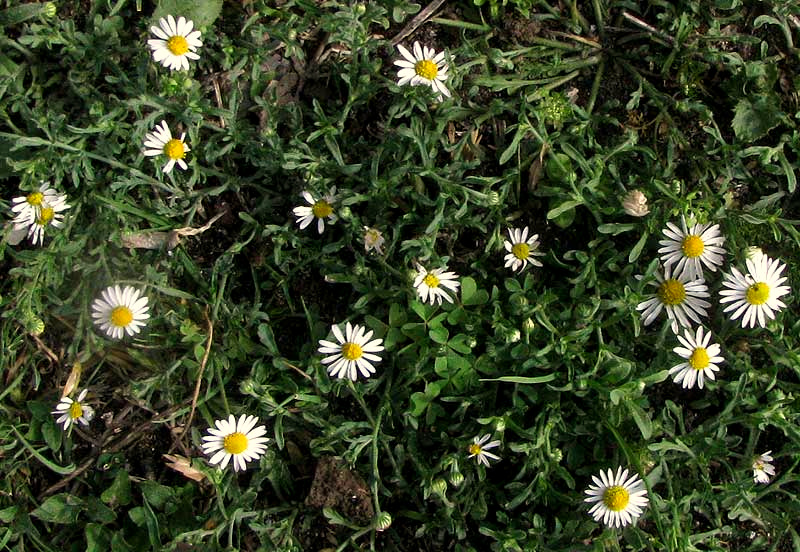
page May 19, 2013 Newsletter issued from the Frio Canyon Nature Education Center in northern Uvalde County, southwestern Texas, on the southern border of the Edwards Plateau; elevation ~1750m (~5750 ft); N29.62°, W99.86°; USA
LAZY DAISIES
In certain spots in the grassy area around the cabin, nowadays a certain small, low-growing, daisy-type wildflower is profusely blossoming with ¾-inch broad (2cm) flower heads with yellow "eyes" and white rays. You can see a small part of the resulting spectacle above. Below, a close-up of a flowering head shows that the eye's yellow disc flowers are stacked atop a little mound in the flower's center:
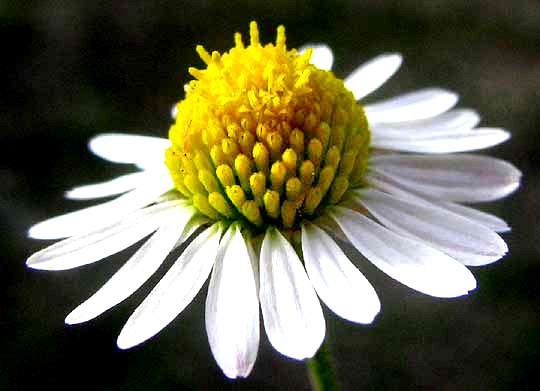
Being a small, low-growing, daisy-type plant with a yellow eye and white rays must constitute an exceedingly good survival strategy because plenty of species have evolved to look and behave like this one. In other words, this species is so similar to others that it can be hard to figure out which one it is. Therefore, with this plant I really had to "do the botany."
First I looked at the involucre with its collection of bract-like phyllaries below the flower head, and saw what's shown below:
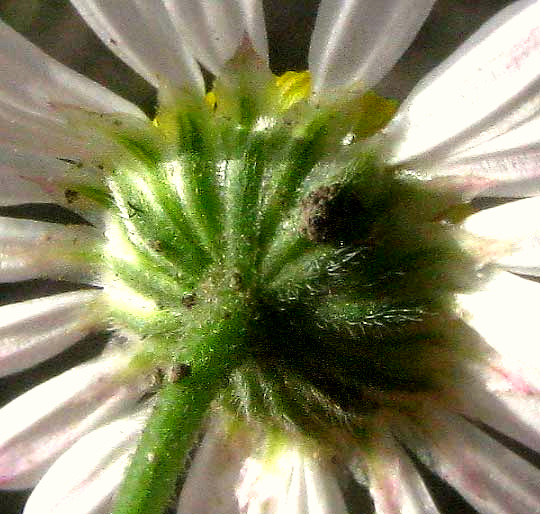
Nothing unusual here, just that the phyllaries are hairy, have thin, cellophane-like (scarious) margins, and are arranged in only three or so series. Hoping for some surprises, I broke open a head and found what's seen next:
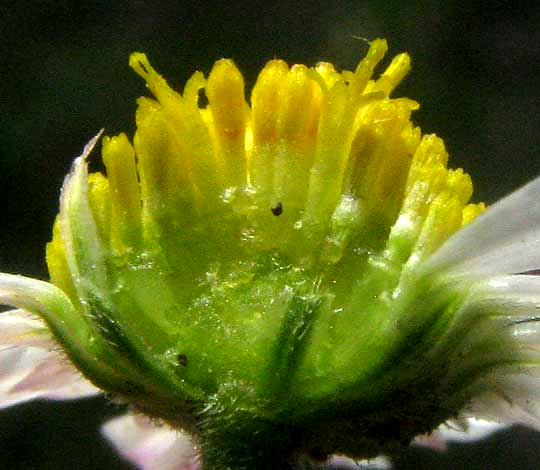
No bract-like items, or paleae, separate the individual disc flowers, so that's a little interesting. Most flowers looking like this have tiny, slender, white hairs constituting the pappus atop the future fruit, or cypsela, but I could see nothing like that here. However, these details are so miniscule, and my hand lens seemed to show something unusual atop the cypsela, so I put some almost-mature cypsela beneath the dissecting scope and saw what's shown below:
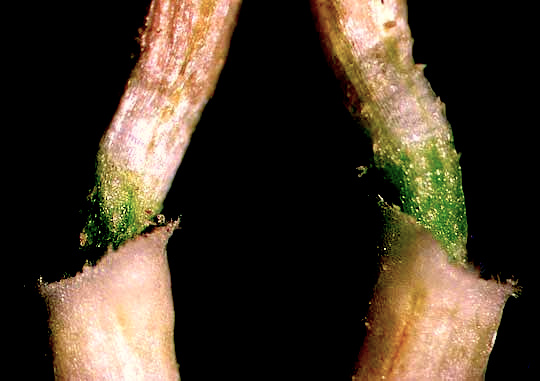
So, here's something special. Atop the cypselae -- the dun-colored items entering the image at the bottom -- there are no slender hairs of the usual kind, but rather there's a hairy "crown." In the picture, greenish bases of disc flowers emerge from inside the crowns and continue upward and out of the picture to become yellow disc corollas.
Such cypsela crowns are not unique to this plant, but they are rare enough that knowing about them and keeping in mind the other features we've mentioned, you can figure out what genus you have. Happily, the Daisy Family is already online at the unfinished Flora of North America, and there our cabin-side plant "keyed out" to the genus Aphanostephus, a genus that in the whole world embraces only four species found almost exclusively in the southwestern US and northern Mexico. Aphanostephus species are known generally as Lazy Daisies, also Doze Daisies, apparently because they make little effort to rise far above the ground.
Our species is APHANOSTEPHUS RIDDELLII, the only perennial in the genus, ascertained by digging up a plant and seeing and feeling the hard, woody taproot. Aphanostephus riddellii also differs from other species by bearing slender, unlobed upper leaves, but larger lower leaves that typically are deeply lobed.
As you've seen, Lazy Daisies are pretty enough to be welcome in any lawn. Some sources sell the seeds just for that.